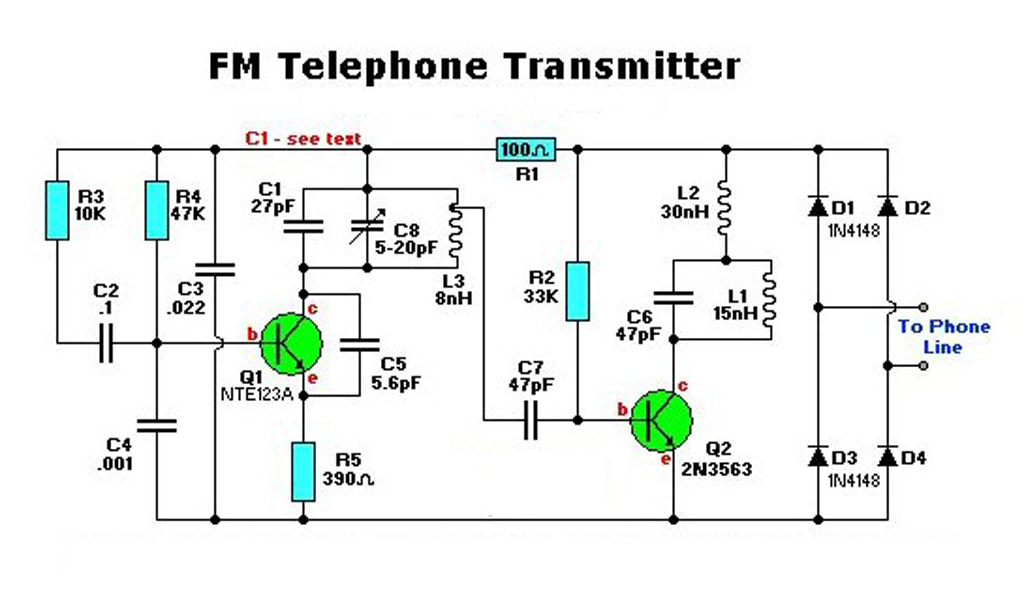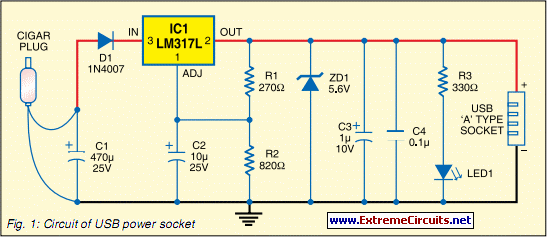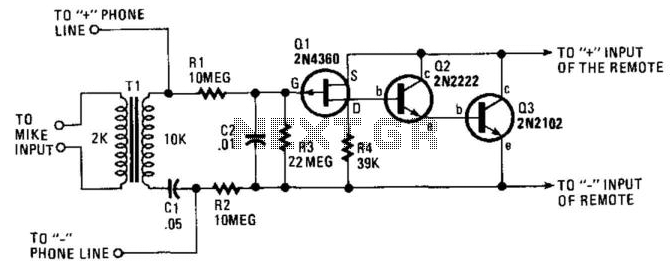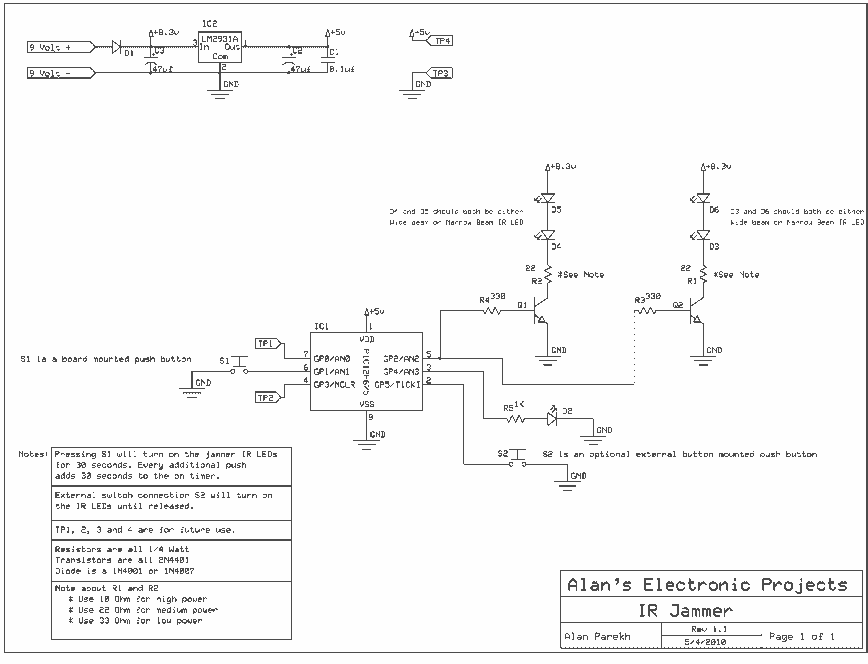
Schematic Diagram Electronic FM Telephone Transmitter Circuit

Electronic FM Telephone Transmitter Schematic. The following schematic design illustrates a circuit diagram for an FM telephone transmitter built on a compact PC board layout. This small design allows it to be easily integrated within the housing of a telephone, effectively functioning as a pseudo-speaker earphone. The components of this circuit diagram are connected in series with the telephone line, drawing power from it.
The FM telephone transmitter circuit operates by modulating the audio signals from a telephone line onto a carrier frequency suitable for FM transmission. Key components of the circuit typically include a microphone, an operational amplifier, a voltage-controlled oscillator (VCO), and a radio frequency (RF) amplifier.
The microphone captures audio signals from the telephone conversation, which are then amplified by the operational amplifier to ensure sufficient signal strength. The VCO modulates the amplified audio signal onto a specific frequency, effectively converting the audio into an FM signal. The RF amplifier further boosts this signal, allowing it to be transmitted over a short distance.
Power for the circuit is derived directly from the telephone line, which eliminates the need for an external power source. This feature not only simplifies the design but also enhances the portability of the device. The compact nature of the PC board layout allows for seamless integration into the telephone housing, maintaining the aesthetic and functional integrity of the device while providing added capabilities.
Careful consideration is required in the design to ensure that the circuit does not interfere with the normal operation of the telephone line. Additionally, the circuit must comply with relevant regulations governing the transmission of radio frequencies to avoid legal issues. Proper shielding and filtering techniques may be implemented to minimize unwanted emissions and ensure that the device operates within designated frequency bands.Electronic FM Telephone Transmitter SchematicThe following schematics design pictures is a circuit diagram FM telephone transmitter that built on a PC board layout which is so small it can simply be fitted within the housing of a telephone creating it an instant pseudo-speak earphone. This circuit diagram FM telephone transmitter components connec ts in series with telephone line, steals power 🔗 External reference
The FM telephone transmitter circuit operates by modulating the audio signals from a telephone line onto a carrier frequency suitable for FM transmission. Key components of the circuit typically include a microphone, an operational amplifier, a voltage-controlled oscillator (VCO), and a radio frequency (RF) amplifier.
The microphone captures audio signals from the telephone conversation, which are then amplified by the operational amplifier to ensure sufficient signal strength. The VCO modulates the amplified audio signal onto a specific frequency, effectively converting the audio into an FM signal. The RF amplifier further boosts this signal, allowing it to be transmitted over a short distance.
Power for the circuit is derived directly from the telephone line, which eliminates the need for an external power source. This feature not only simplifies the design but also enhances the portability of the device. The compact nature of the PC board layout allows for seamless integration into the telephone housing, maintaining the aesthetic and functional integrity of the device while providing added capabilities.
Careful consideration is required in the design to ensure that the circuit does not interfere with the normal operation of the telephone line. Additionally, the circuit must comply with relevant regulations governing the transmission of radio frequencies to avoid legal issues. Proper shielding and filtering techniques may be implemented to minimize unwanted emissions and ensure that the device operates within designated frequency bands.Electronic FM Telephone Transmitter SchematicThe following schematics design pictures is a circuit diagram FM telephone transmitter that built on a PC board layout which is so small it can simply be fitted within the housing of a telephone creating it an instant pseudo-speak earphone. This circuit diagram FM telephone transmitter components connec ts in series with telephone line, steals power 🔗 External reference





